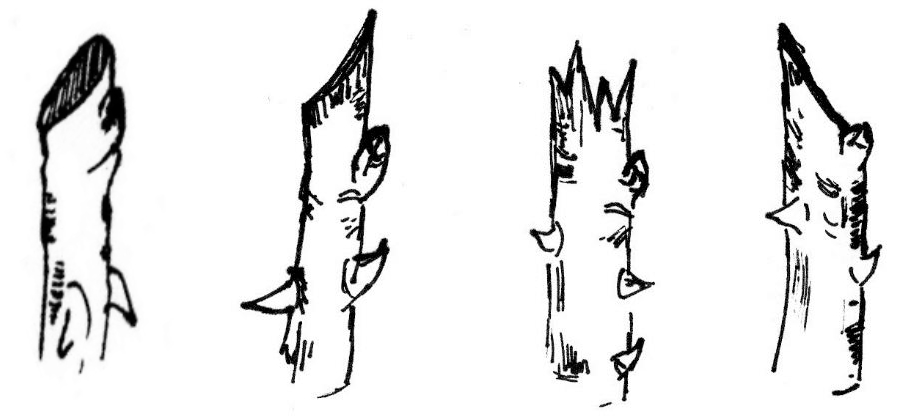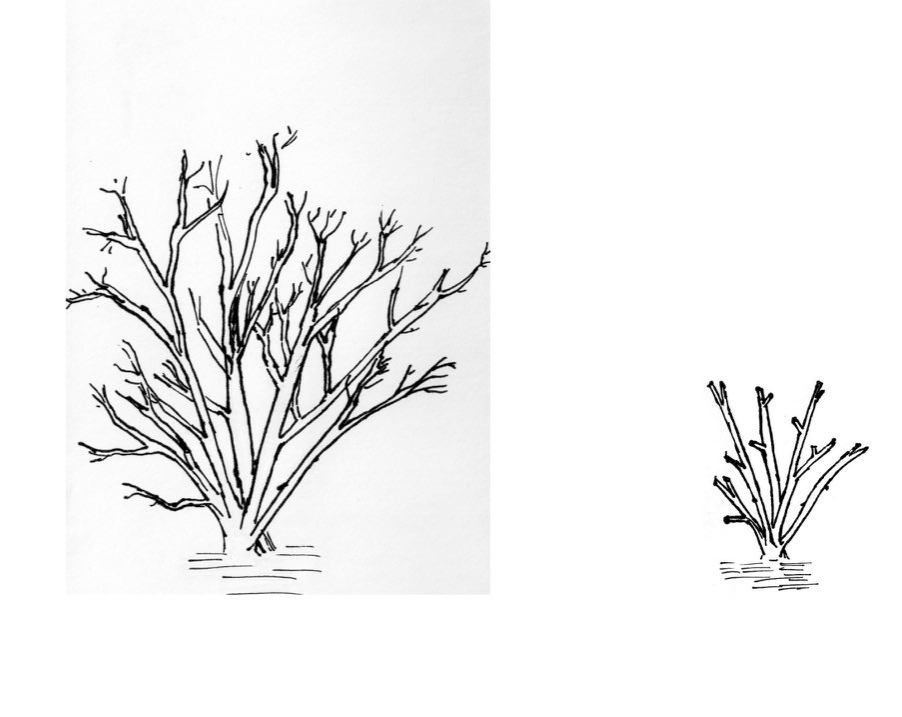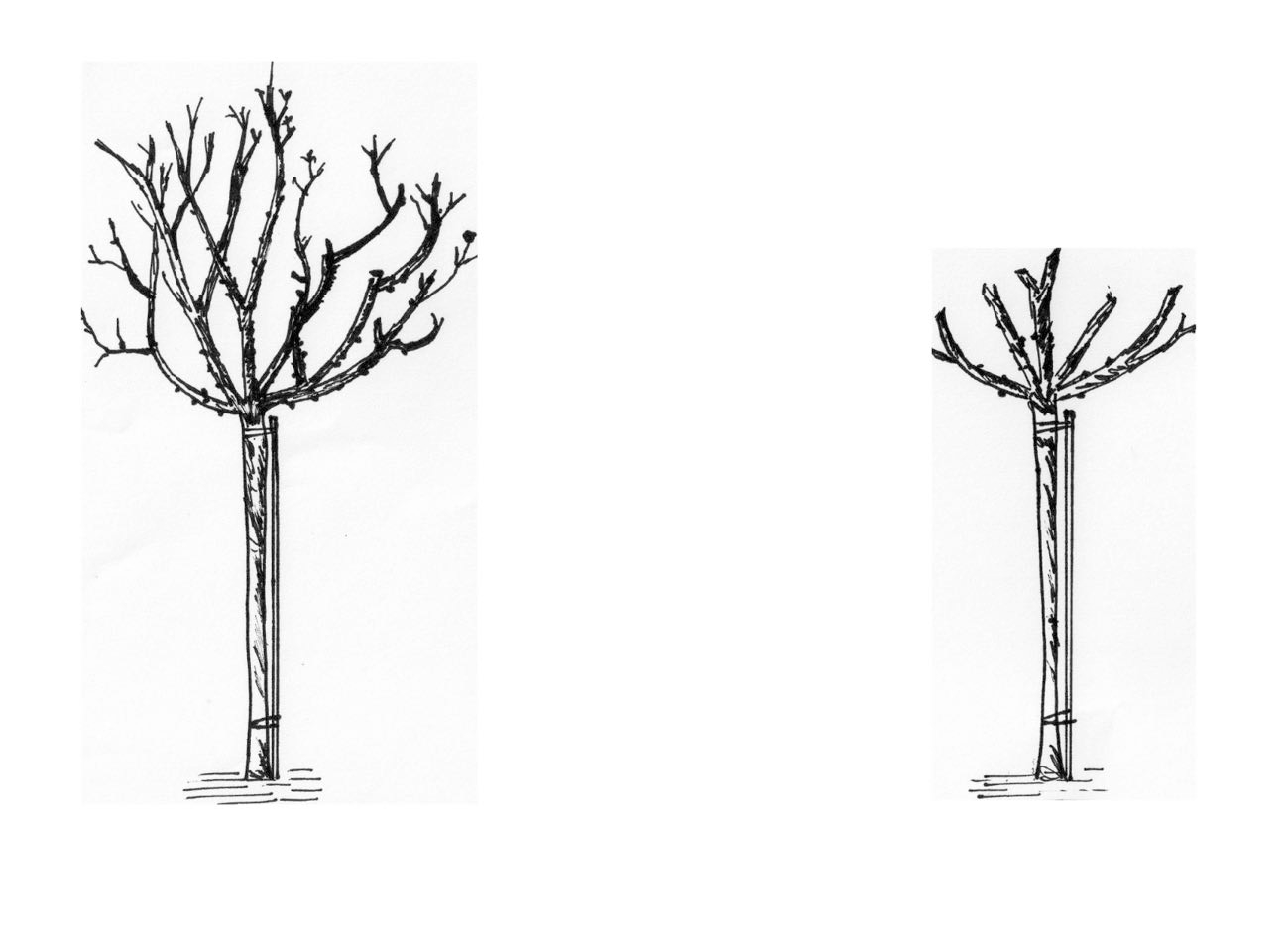
Rose Pruning Masterclass
To get the best results year on year roses need an annual prune between November and March.
Rules for All Roses
To start, the first things to prune out are the 3 Ds (dead, diseased and damaged wood).After pruning clean away any of last year’s leaves from the ground as these harbour pests and diseases and then give a good mulch of blended farm manure. As an alternative to blended manure you can use chicken pellets or a granule fertiliser such as Blood Fish and Bone or Growmore or rose fertiliser equivalent with a topping of well-rotted woodchip for added humus. If using chicken pellets use them sparingly as they have a very high nitrogen content and will encourage fast soft growth that can lack strength.Top Tips
1. Remove dead, diseased and damaged wood (the 3 Ds).2. Prune out congested wood to allow air and sunlight into all areas of the rose. This will reduce the risk of disease.
3. Cut just above a healthy bud. Your cut should be sloping away from the bud. 4. Ensure all your pruning tools are sharp and clean. 5. Once the 3 Ds have been removed shape or train to achieve the effect you want. 6. Don’t be afraid, just follow these simply steps.Examples of correct and incorrect cuts.
1. Just above dormant bud at an angle of about 45° sloping away from the bud. This is the correct cut.
2. Too high above the bud - incorrect cut
3. Blunt secateurs - incorrect cut
4. Too close to the bud and sloping the wrong way - incorrect cut
Hybrid Tea, Floribunda and English Roses
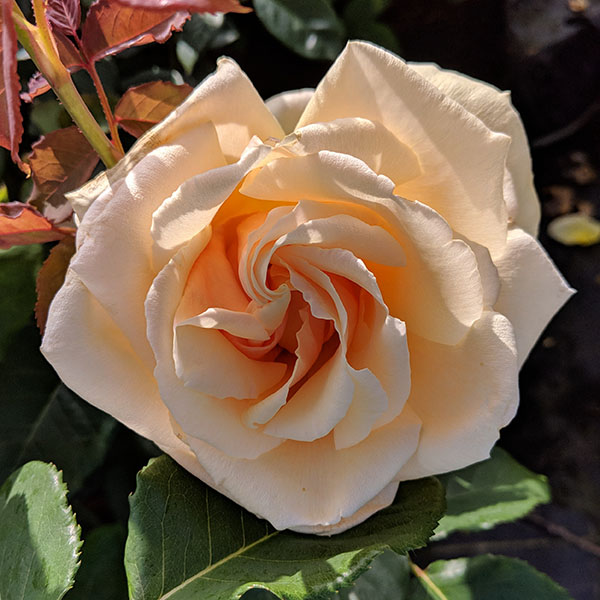

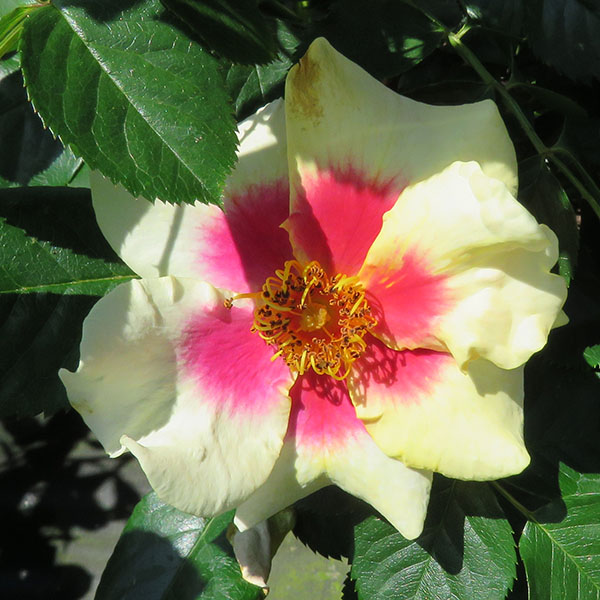
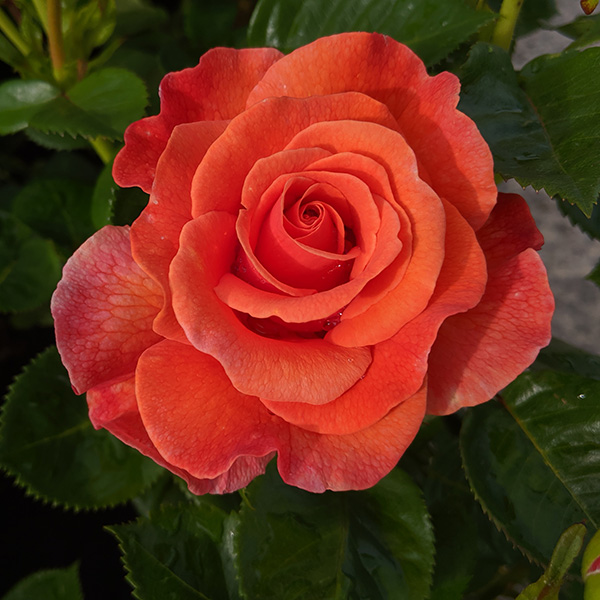
These are the most popular and widely grown roses, and can be cut back hard each winter.In the autumn reduce the bush by 1/3 to prevent excessive wind rock through the winter. The final prune is left until February or early March reducing the chance of winter dieback post pruning.
Hybrid Tea roses have stems of single large flowers and get cut back harder than floribundas and English roses. These roses can get cut back to 3-5 buds from last year’s pruning cut and old stems with developed knuckles can be cut right back to 15cms from ground level. This will encourage fresh new shoots from ground level that will replace the older ones. These new shoots get cut back to 3-5 buds from ground level on the first year and 3-5 buds from previous years cut on subsequent years until they become old gnarly knuckles when they get cut below the knuckle to encourage new shoots. The knuckles when they get cracked and gnarly can be a haven for overwintering pests and diseases which is why we prune them out. Floribunda and English roses flower with multiple heads of flowers and get pruned in a similar fashion to Hybrid Tea roses but not quite as hard.Hybrid Tea before and after Floribunda and English Roses before and after
Climbing and Rambling Roses
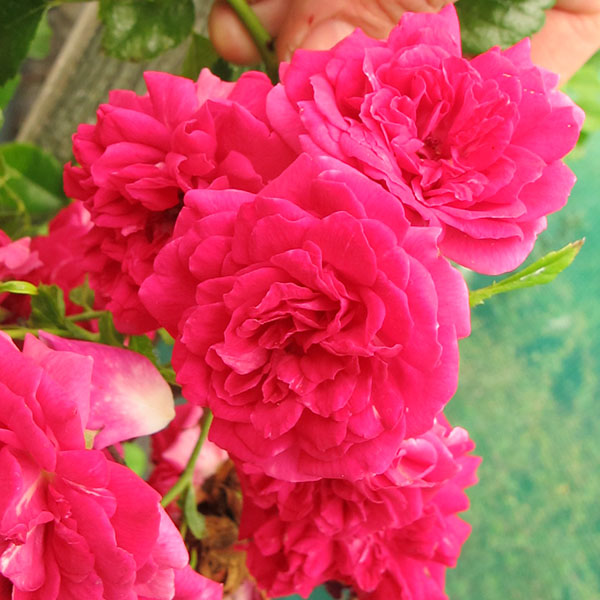

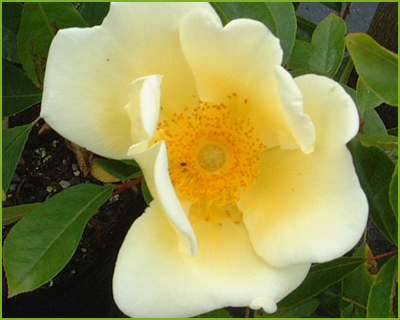
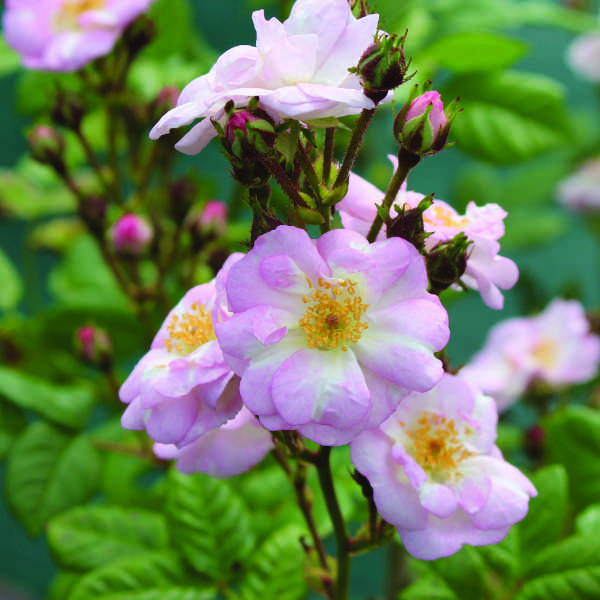 As a general rule climbing roses tend to have larger flowers than ramblers and often repeat throughout the summer whereas ramblers tend to flower prolifically just once. They have different pruning regimes.
As a general rule climbing roses tend to have larger flowers than ramblers and often repeat throughout the summer whereas ramblers tend to flower prolifically just once. They have different pruning regimes. Climbers
When planting a climbing rose tie in the strongest shoots as they grow to create a framework and prune out any weak spindly branches. Dead head any flowers as they go over. After a couple of years you should have an established framework of healthy strong shoots from which lateral branches grow producing flowers. These lateral branches should be pruned back to 2 or 3 buds from the framework shoots each winter allowing for fresh new shoots to produce the flowers for the following year. Every few years some regenerative pruning is needed when a climber underperforms or becomes riddled in rust or blackspot. Old branches can be cut right out to the base and new shoots tied in in their place. Climbing patio roses will have a better first flush of flowers if more lateral shoots are left once the framework is tied in. These will be pruned back when deadheading after this first flush is over.Ramblers
Rambling roses will sprout new strong shoots each season. These should be tied in for the following season’s flowers and the old flowering shoots should be removed right down to ground level. Tie in the new shoots as they grow whilst they are soft and pliable. If you leave them too late they will invariably break as the wood has hardened during the season and does not bend as readily. Tidying up and removing the flowered wood can be left for the winter prune.Standards and Weeping Standards
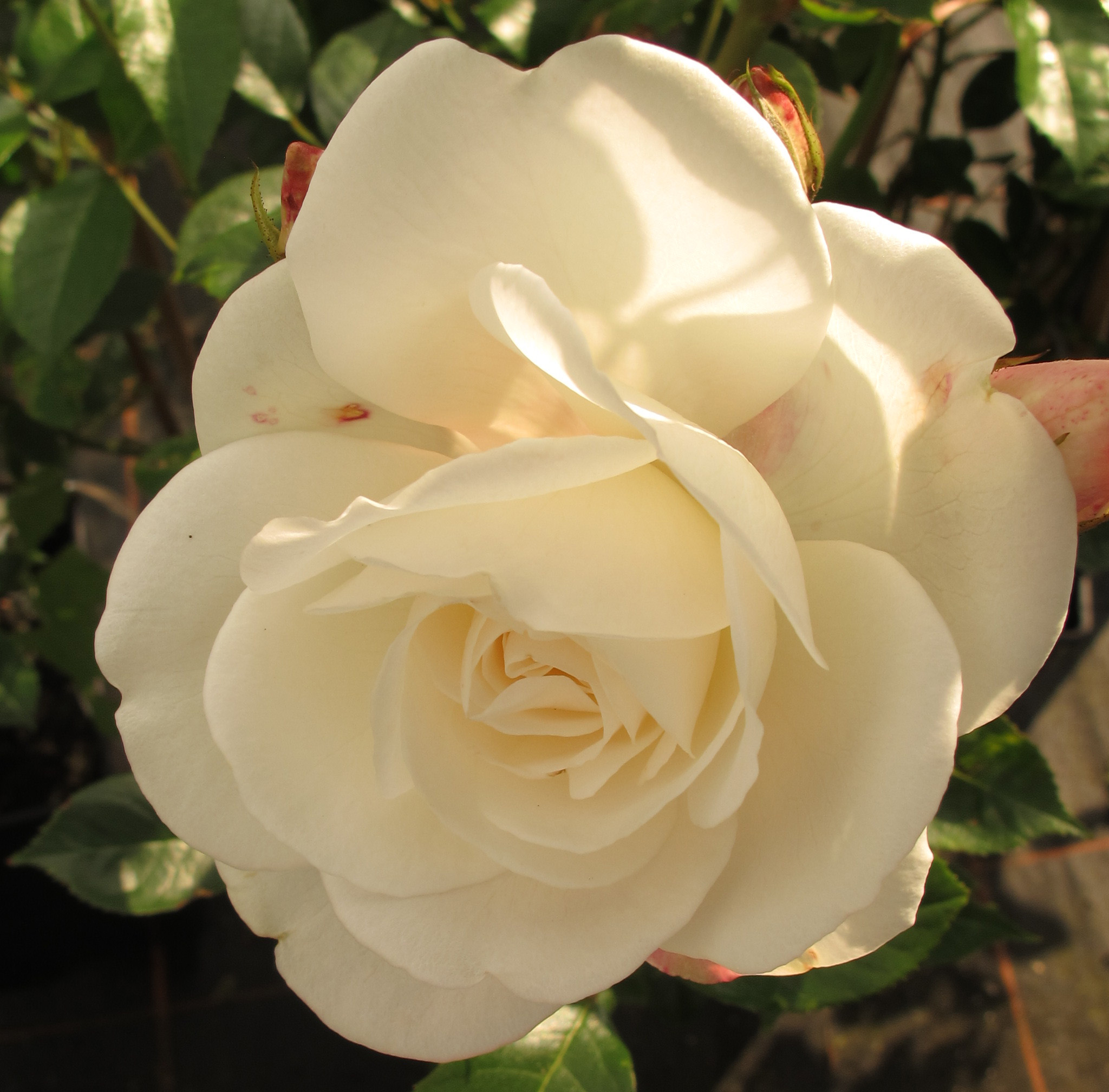
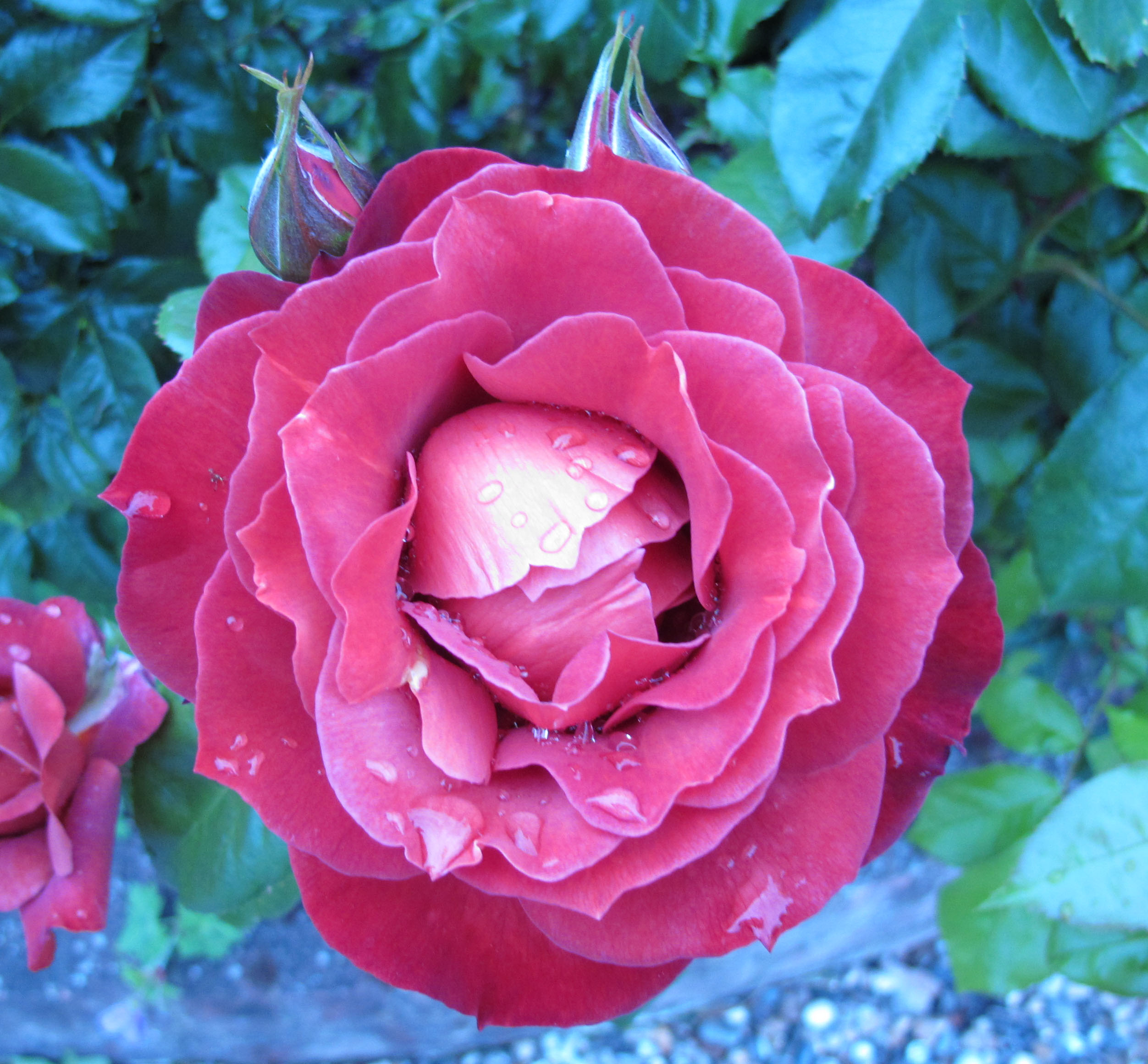 To prune standards the same basic tasks such as removing the 3 Ds is the first thing to do. Then it is down to relieving congestion in the crown by thinning out the weaker stems and cutting the rest back to leave a pleasing open framework. Weeping standards (generally ramblers or ground cover roses budded onto standard stems) can be more effectively pruned by placing a frame over the head and tying the branches onto this.
To prune standards the same basic tasks such as removing the 3 Ds is the first thing to do. Then it is down to relieving congestion in the crown by thinning out the weaker stems and cutting the rest back to leave a pleasing open framework. Weeping standards (generally ramblers or ground cover roses budded onto standard stems) can be more effectively pruned by placing a frame over the head and tying the branches onto this.Before and After.
Groundcover and Patio Roses

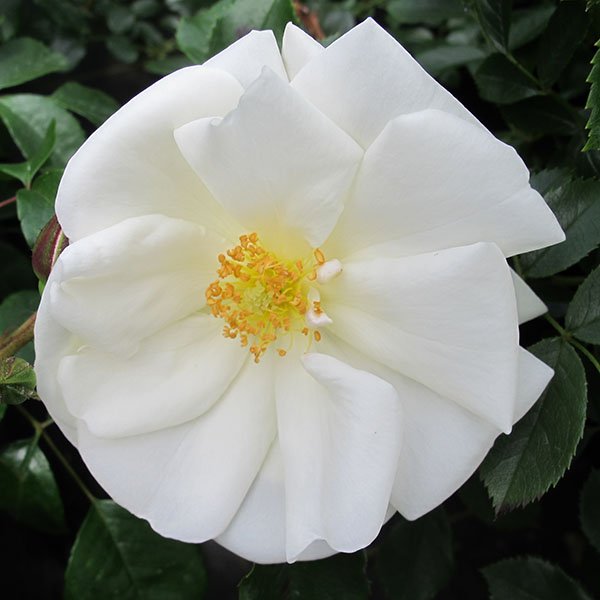 These are best pruned with hedge trimmers at the end of the season and then quickly gone over in late winter removing the 3 Ds. This is all they really need other than a good feed and mulch. Easy!
The same method is used for hedging roses such as rugosas.
These are best pruned with hedge trimmers at the end of the season and then quickly gone over in late winter removing the 3 Ds. This is all they really need other than a good feed and mulch. Easy!
The same method is used for hedging roses such as rugosas.Oddballs!
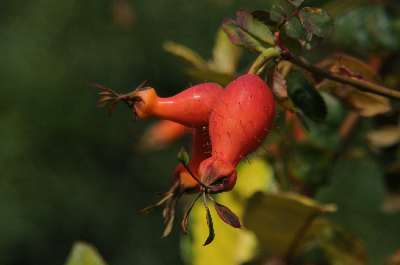
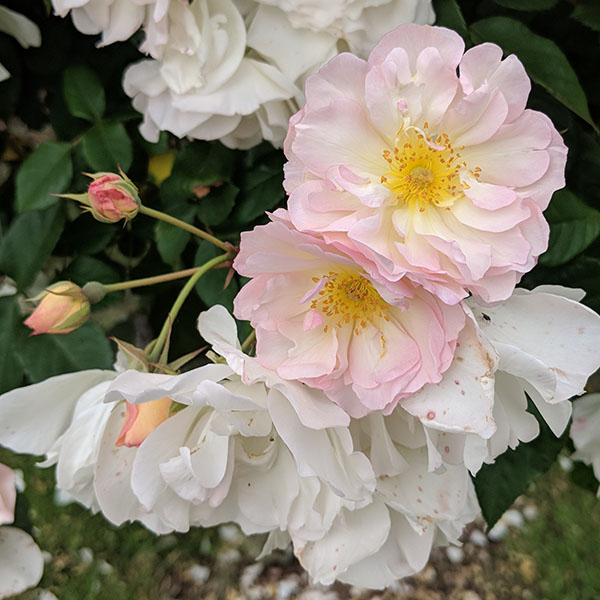
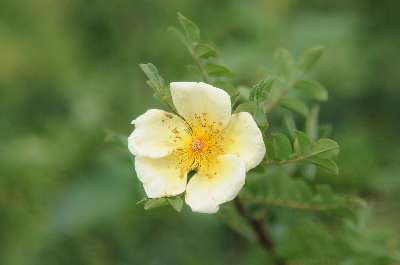 Moyesii hybrids are grown as much for the hips and their tall arching stems as the flowers and therefore do not get dead headed. The winter prune for these is different also. Remove one or two of the oldest branches down to base each winter that will encourage new shoots to take over. Doing this will regenerate the whole plant over the course of a few years. Old fashioned roses such as Penelope and Bonica should be shaped with hedge trimmers after flowering removing all dead heads. This is a quick and easy job and will result with another flush of flowers later on in the summer especially so with Bonica that will repeat beautifully in September/October.
Xanthina hybrids (Hugonis or Canary Bird) often throw up suckers from the rootstock through the season. These suckers are easily identifiable as they look nothing like the other stems and grow 10 times as fast. Cut them out to soil level or below. Once the flowers are over shape the bush with hedge trimmers and only remove the 3 Ds in the winter prune. Done.
Moyesii hybrids are grown as much for the hips and their tall arching stems as the flowers and therefore do not get dead headed. The winter prune for these is different also. Remove one or two of the oldest branches down to base each winter that will encourage new shoots to take over. Doing this will regenerate the whole plant over the course of a few years. Old fashioned roses such as Penelope and Bonica should be shaped with hedge trimmers after flowering removing all dead heads. This is a quick and easy job and will result with another flush of flowers later on in the summer especially so with Bonica that will repeat beautifully in September/October.
Xanthina hybrids (Hugonis or Canary Bird) often throw up suckers from the rootstock through the season. These suckers are easily identifiable as they look nothing like the other stems and grow 10 times as fast. Cut them out to soil level or below. Once the flowers are over shape the bush with hedge trimmers and only remove the 3 Ds in the winter prune. Done.
Useful pruning tools/aids
1. A good quality pair of secateurs (Felco are the best). 2. Gloves. 3. A sharp pruning saw. 4. A quality pair of loppers. 5. A ball of garden twine. 6. A knife. 7. Hedge trimmers. 8. Ladder.9. Vine eyes.
10. Training wire.
11. Wheelbarrow

